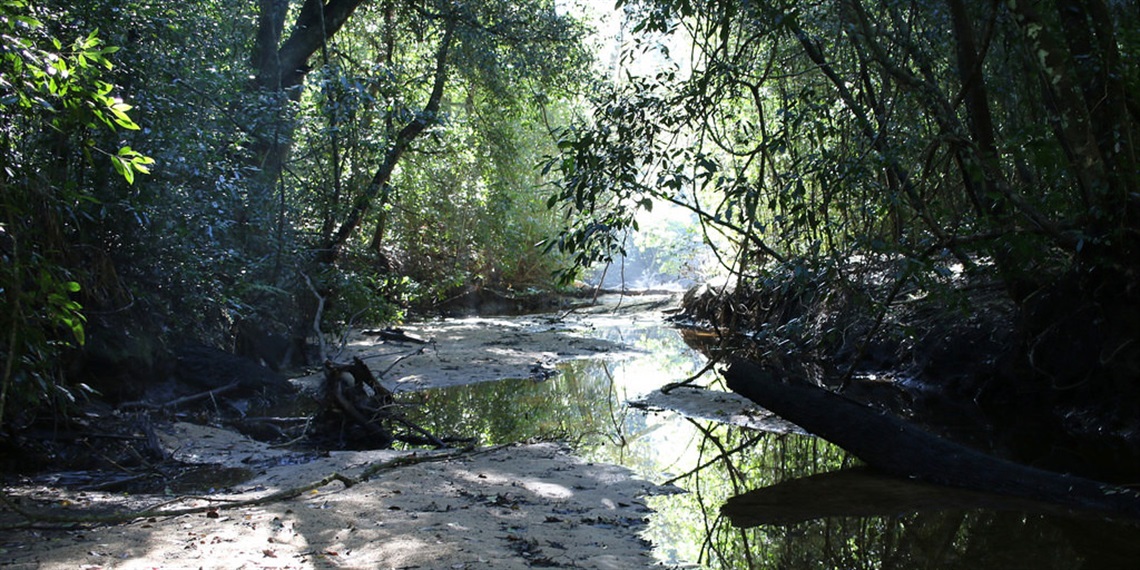Creek care

Channel erosion and deposition is a natural process for creeks of all sizes. However in many urban areas, land use change and development put extra pressure on local creeks. There are a number of general rules to help maintain a natural balance of erosion and deposition.
Maintain riparian vegetation
Plants growing on the banks and in the channel are important for stability. Any area not modified with hard engineering, must have a stable, established ground cover covering the banks to minimise erosion and deposition downstream.
Maintain trailing plants and woody debris
Where fallen branches or growing plants accumulate in a creek, try to avoid removal. These features slow water flow and decrease its erosion potential. In some circumstances, these features can become flood hazards or cause localised scour, which may threaten infrastructure assets. In these cases, the debris may need to be removed. This should be discussed with Council to assess the risk and action.
Use 'soft engineering' to stabilise channels
In certain circumstances it may be necessary to stabilise an eroding channel through re-grading the banks, adding vegetation and/or strategically placing natural features such as logs.
Works of this kind that require any re-engineering or contouring of the creek bank should be designed and constructed by qualified professionals and have a development application. Superficial works such as re-vegetation or other surface erosion controls may be carried out without a development application. Contact us if you are unsure if your planned works are suitable.
Use 'hard engineering' to stabilise channels
'Hard engineering' includes works such as rock lining, channel re-alignment and/or other significant work which is sometimes required to stabilise a channel. These works should always be designed and constructed by qualified professionals and require a DA.
Any significant work within a channel must be in accordance with the Riparian and Water Management controls in Council’s relevant Development Control Plan.
Outlet protection
Sound engineering design requires extra protection at pipe and culvert inlets and outlets. A range of energy dissipaters can be used, including rough surfacing, basins, large protruding structures and graded spillways. Any of these structures should be designed by a qualified engineer using suitably sized natural materials and constructed in a manner that complements the receiving environment.
Further information can be found in the fact sheet guidelines for controlled activities - outlet structures from the Department of Water and Energy.
Water quality monitoring
Council undertakes biannual water quality monitoring of these waterways to track conditions and alert to any influencing factors up stream.